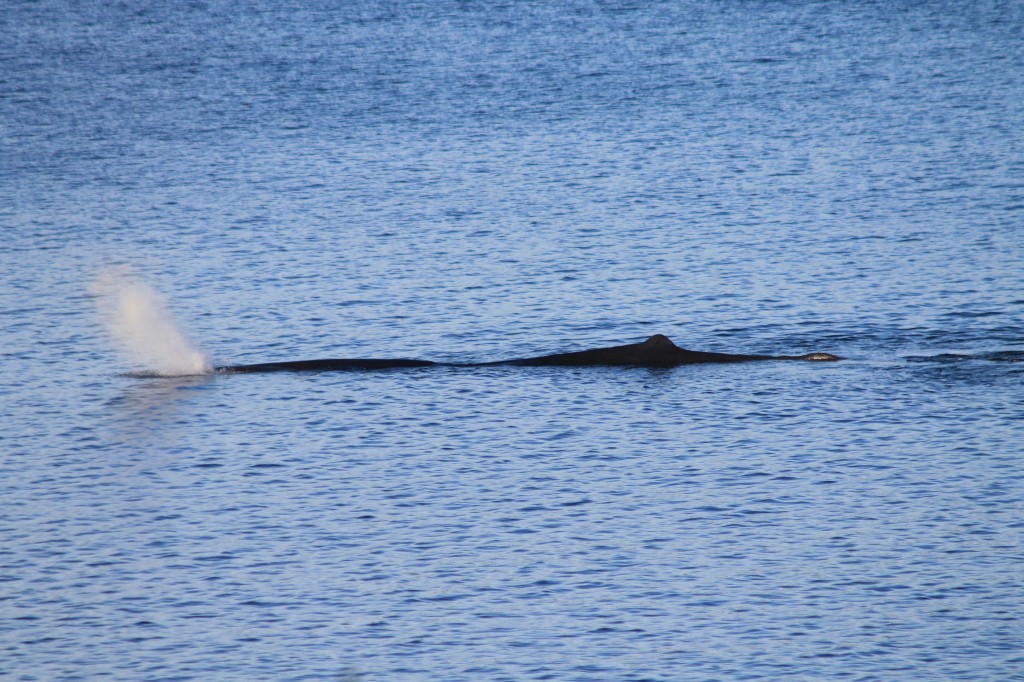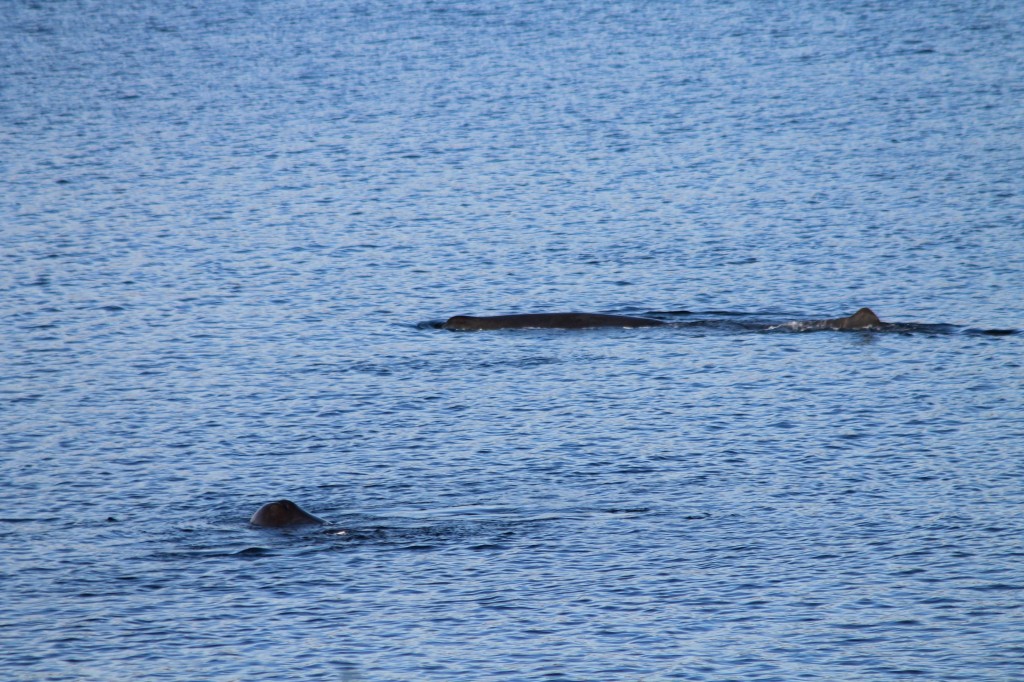An unusual sighting of two sperm whales near to the coast of the Isle of Skye this week could be a reflection of climate change and warming sea temperatures, says a leading marine scientist.
The sperm whales – one of the true giants of the oceans – were spotted by Skye resident, Catherine Atkins, yesterday afternoon. Unsure of the whale species she had been watching for around half an hour in the mouth of Camus Mor by Gedintailor, she contacted local wildlife trip operator, Nick Davies who passed on the information to the Sea Watch Foundation.
With such close proximity and excellent photographs of the animals, Dr Peter Evans of the Sea Watch Foundation was able to positively identify them as two sperm whales, and said “In past decades, most records of sperm whales in British waters have been of lone adult males around Scotland mainly around the Northern Isles and the Hebrides. Increasingly, however, adolescent males have occurred in our waters, sometimes in groups of 5-10 individuals.”
“Sightings of sperm whales have tended to occur mainly in summer so this early spring sighting is notable not just for the time of year but for its inshore location. The species normally lives in waters of 1,000 metres or more depth, beyond the continental shelf edge. Here they have been seen very close to land indeed. It is interesting to note that a sperm whale was seen last year around this time also very close in, within Oban Bay. That individual stayed around for over a week.”
“The increased occurrence of winter and spring sightings in Scottish waters could be a reflection of climate change, if their main prey, squid, have become more abundant locally in recent years, resulting in animals staying through the winter to feed rather than travelling into lower warmer latitudes.”
Sperm whales are amongst the largest mammal species in the world. Adult males can weigh in at up to 45 tonnes – the iconic London Routemaster double decker bus weighs less than 8 tons, unladen!
Catherine Atkins did a little research before submitting her sighting and showed her surprise by telling Sea Watch “I see sperm whales have blunt heads but they are not usually found just outside the front door in Skye!”. Boat operator, Nick Davies, from Hebridean Whale Cruises based in Gairloch who is involved in a project collecting cetacean (whale, dolphin and porpoise) data raised the concern that one of yesterday’s whales was “nearly on the rocks” and that Catherine had actually telephoned the coast guard for assistance before the two whales slowly headed north. Regarding a previous sighting of sperm whales in the area in winter 2013, Nick noted “Fishermen have been telling me that for the past four or five years they have been seeing increasing amounts of squid in their nets, and it seems that this was perfect for the sperm whale.”
The sighting, made on Tuesday March 11th was in waters in the mouth of Camus Mor near to Gedintailor, on the east coast of the Isle of Skye.
According to our national database, there have been only around one hundred separate sightings in British waters in the last forty years, with the largest group on record being of 20 animals seen off Mousa in the Shetland Islands in 2007.
If you’d like to volunteer to be a Sea-Watcher and help us document cetacean activity around the UK then please see our webpage about ‘How to Watch’ and contact our sightings officer, Kathy on: kathy.james@seawatchfoundation.org.uk.
Thank you!


























